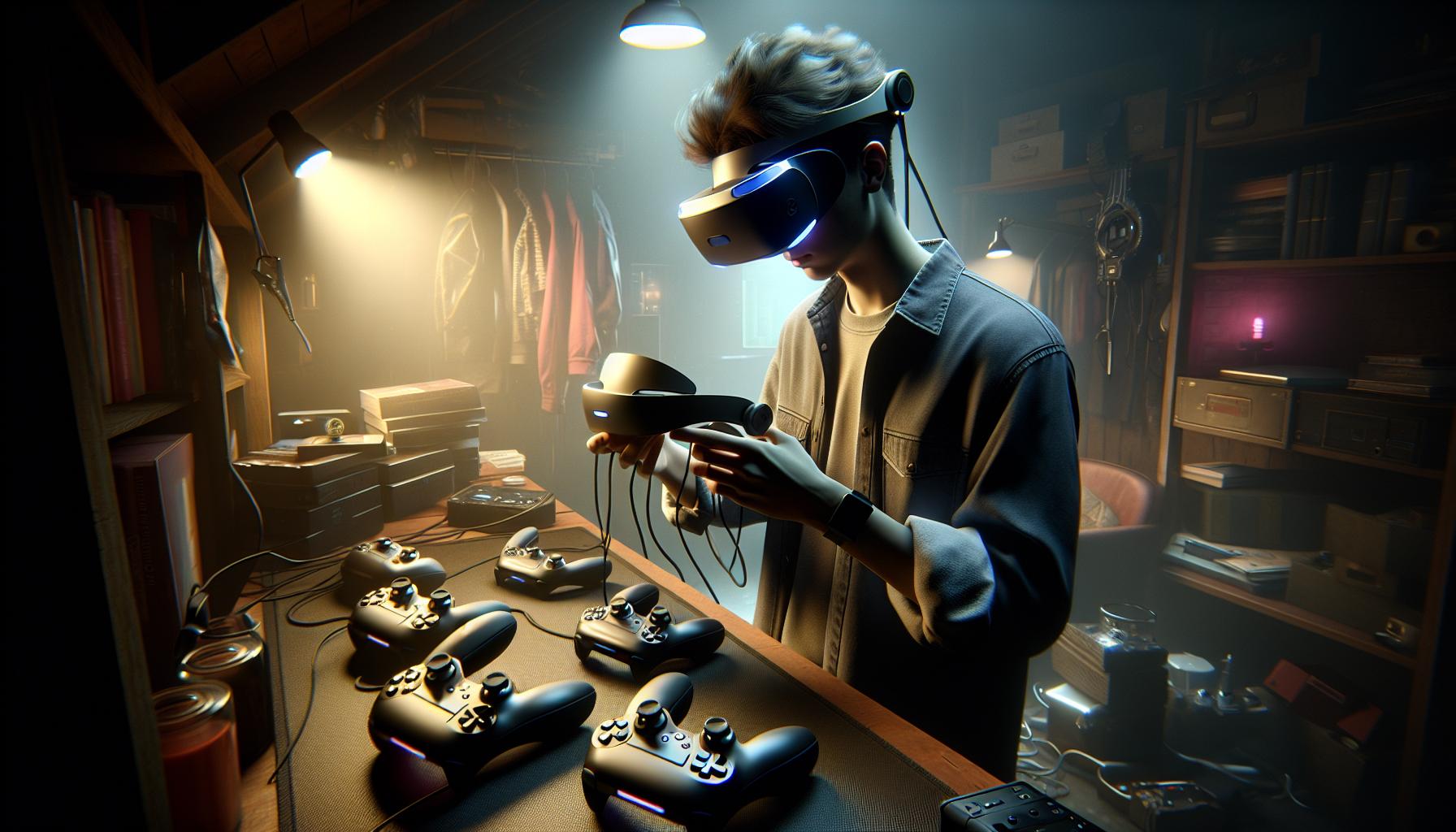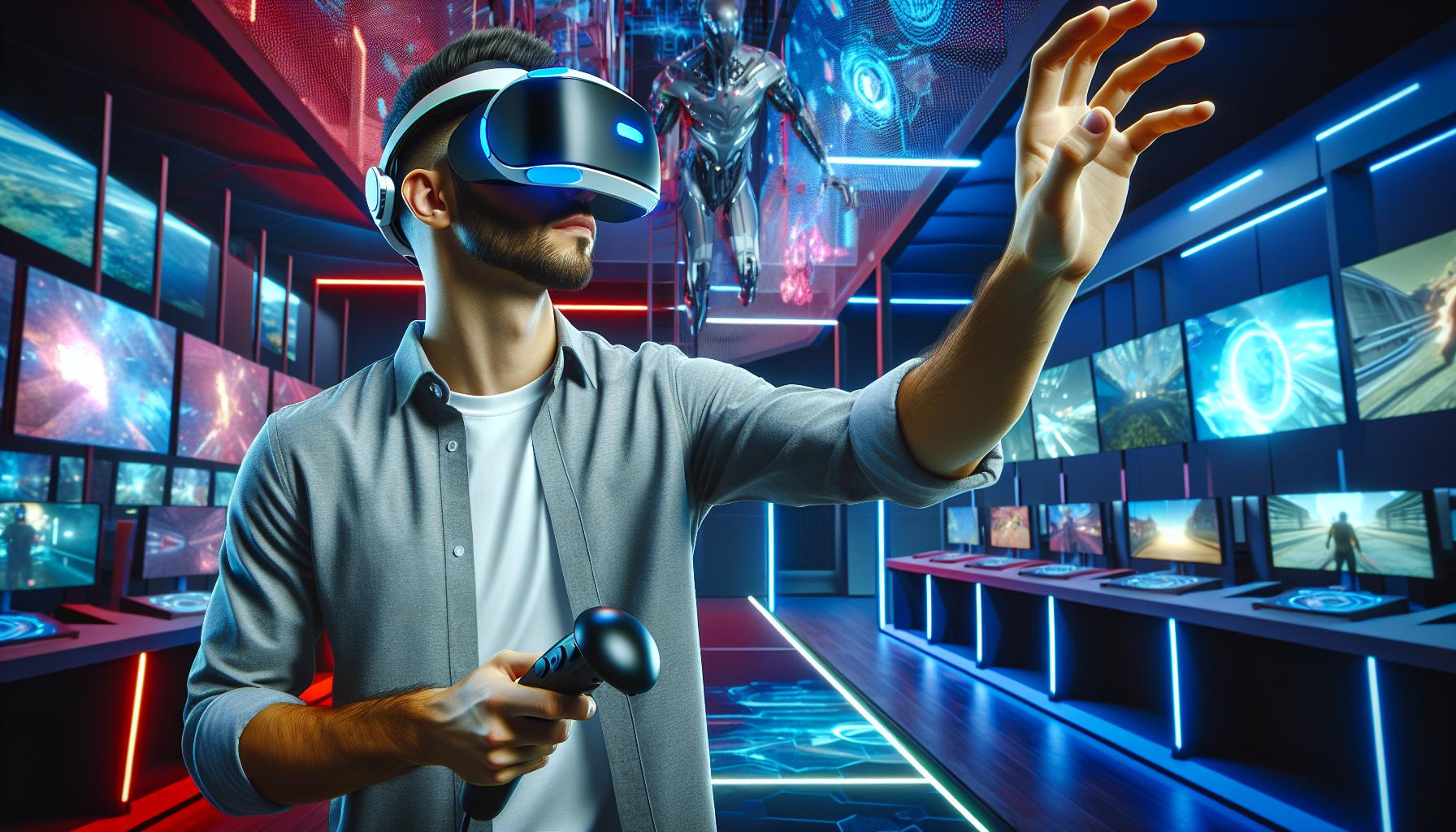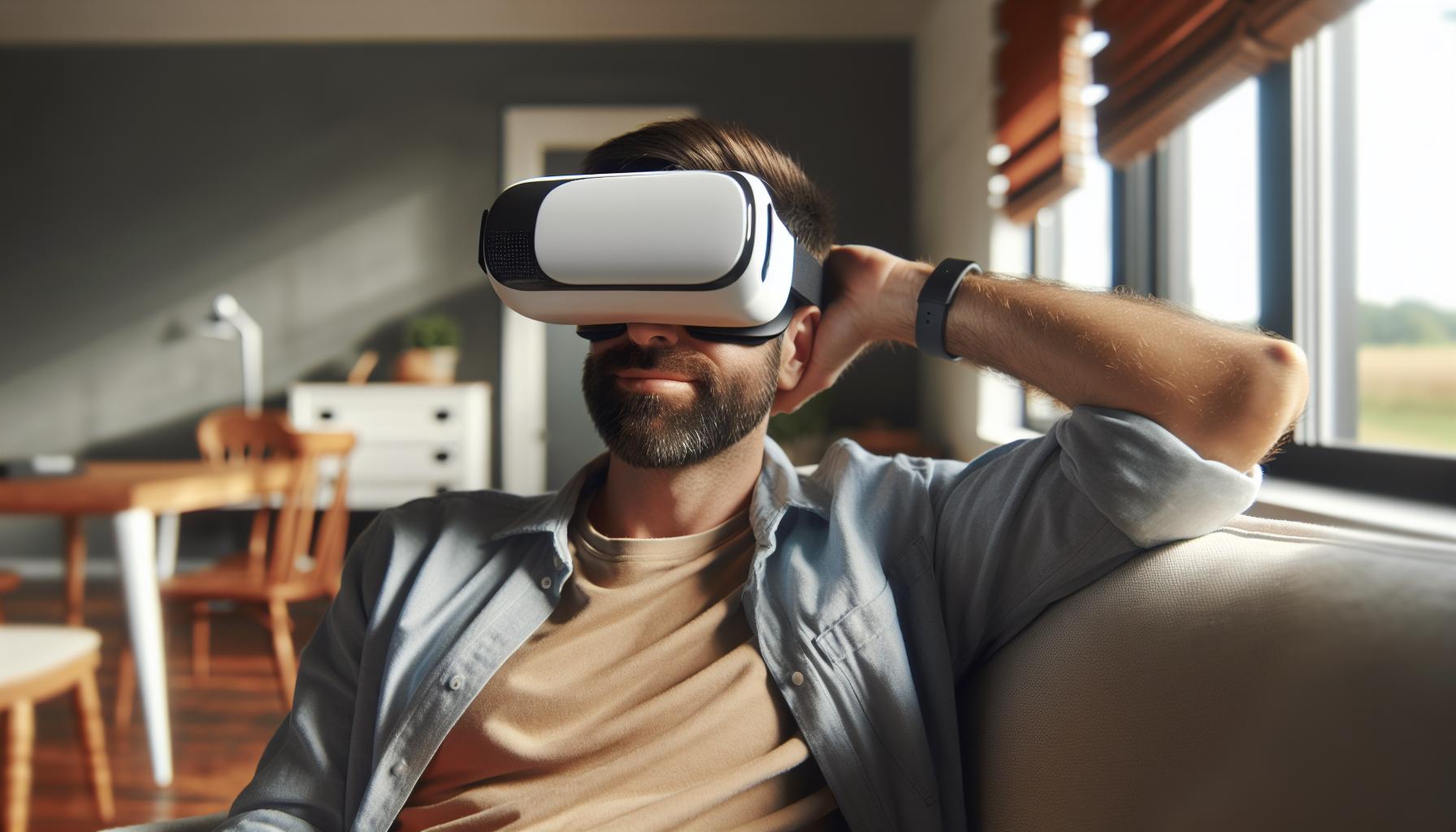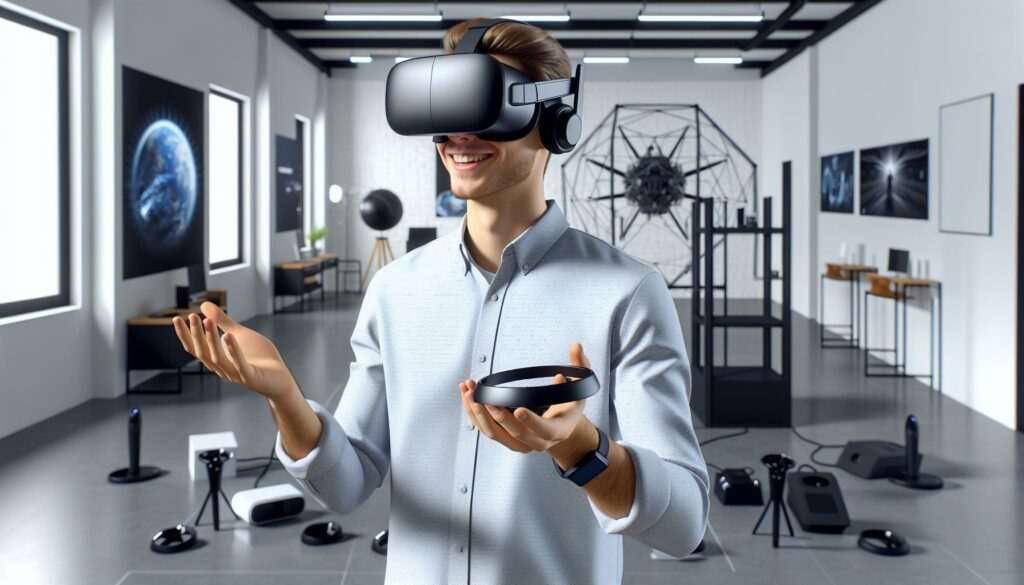Virtual reality has transformed from science fiction into an accessible technology that lets anyone step into immersive digital worlds. With VR headsets becoming more affordable and user-friendly, more people are ready to dive into virtual experiences but might feel intimidated by the technology.
Getting How to Use Virtual Reality Headset doesn’t require a PhD in computer science or superhuman coordination. Whether it’s exploring virtual worlds playing games or attending virtual meetings anyone can master the basics of VR with some simple guidance. From setting up the play space to mastering the controllers this guide will walk through everything needed to begin the virtual reality journey safely and confidently.
How to Use Virtual Reality Headset
Setting up a VR system requires specific hardware components and adequate space to ensure a safe and enjoyable experience. Here’s a comprehensive breakdown of the essential elements for getting started with virtual reality.
Essential Components and Accessories
A complete VR setup includes a VR headset from manufacturers like Meta Quest, Valve Index or HP Reverb. The primary components include:
- VR Headset: The main device with built-in displays and motion sensors
- Controllers: Motion-tracking hand devices for interacting with virtual objects
- Base Stations: External sensors for room-scale tracking (required for specific headsets)
- Connection Cables: High-speed cables for PC-connected VR systems
- Comfort Accessories: Face cushions, lens protectors and head strap upgrades
- Cleaning Kit: Microfiber cloths and lens cleaning solution
- Standing Experience: 3 x 3 feet minimum clear space
- Room-Scale VR: 6.5 x 6.5 feet recommended area
- Ceiling Height: 6.5 feet minimum clearance
- Play Area Features:
- Flat solid surface for stable footing
- Clear space free from furniture or obstacles
- Area away from windows and bright light sources
- Buffer zone between play space and walls
Setting Up Your VR Headset

Proper setup of a VR headset maximizes comfort and performance during virtual reality sessions. The initial configuration process establishes optimal visual clarity and tracking accuracy for an immersive experience.
Adjusting the Headset for Comfort
The top strap centers the headset’s weight across the head while the side straps secure it in position. Users adjust the interpupillary distance (IPD) slider to match their eye spacing, typically ranging from 58-72mm. A properly fitted headset rests the facial interface against the face without pressure points, allowing extended wear without discomfort. The rear cradle sits low on the back of the head to distribute weight evenly. Fine-tuning the eye relief creates the optimal balance between field of view and comfort for glasses wearers.
Configuring Controller Settings
The VR system’s setup wizard guides users through controller pairing and hand preference selection. Motion tracking calibration requires users to hold controllers at chest height while rotating 360 degrees. Users customize button mapping through the VR platform’s settings menu to match their preferred control scheme. The grip sensitivity adjusts between 5 levels to accommodate different hand sizes. Controller vibration intensity ranges from 0-100% for haptic feedback customization. Battery indicators display remaining power levels in 20% increments through the system dashboard.
Understanding Basic VR Controls

Virtual reality controls enable users to navigate digital environments through intuitive movements and gestures. VR systems translate physical actions into virtual responses through motion-tracked controllers and sensors.
Movement and Navigation
Virtual reality systems offer multiple navigation methods for exploring digital environments. Teleportation allows instant movement by pointing the controller at a desired location and pressing the trigger button. Physical walking within the defined play space translates directly to in-game movement through room-scale tracking. Smooth locomotion enables continuous movement using the thumbstick or touchpad, similar to traditional video game controls. Some applications incorporate specialized movement mechanics like flying, climbing or swimming based on natural arm motions. Advanced VR titles combine these navigation options to create seamless exploration experiences.
Hand Gestures and Interactions
VR controllers track precise hand movements to facilitate natural interactions with virtual objects. Users grab items by squeezing controller triggers or grip buttons while reaching toward objects. Common gestures include pointing with index fingers, making fists for punching motions or extending open palms for pushing surfaces. Motion controls support contextual actions like throwing objects, drawing in 3D space or manipulating virtual tools. Hand tracking technology in newer headsets enables controller-free interaction by directly monitoring finger movements. These intuitive controls create realistic feedback when touching, holding or manipulating virtual items.
Best Practices for VR Safety

Safe virtual reality usage relies on understanding proper practices to protect physical health during extended sessions. Following established safety guidelines minimizes discomfort while maximizing enjoyment of VR experiences.
Taking Regular Breaks
VR sessions impact eye strain fatigue through prolonged exposure to bright displays. Taking a 10-minute break every 30 minutes prevents visual fatigue symptoms like dry eyes or blurred vision. During breaks, users benefit from focusing on distant objects at least 20 feet away to relax eye muscles. Physical stretching exercises help prevent neck strain from prolonged headset wear. Setting break reminders through smartphone apps or VR system notifications ensures consistent rest periods. Staying hydrated supports overall comfort during extended VR sessions.
Managing Motion Sickness
Motion sickness occurs when visual inputs conflict with physical movement sensations in VR environments. Starting with stationary experiences builds tolerance before advancing to games with artificial locomotion. Enabling comfort settings like teleportation reduces motion sickness triggers. Using a fan creates airflow that helps maintain spatial orientation. Ginger supplements or anti-nausea wristbands provide relief for susceptible users. Stopping VR activity at the first sign of discomfort prevents symptom escalation. Gradually increasing session duration allows the brain to adapt to virtual environments.
Tips for an Immersive VR Experience
Creating an immersive virtual reality experience requires optimizing several key settings on VR headsets. These adjustments enhance visual clarity performance stability while maintaining smooth gameplay.
Optimizing Graphics Settings
Graphics optimization starts with adjusting the supersampling rate in the VR headset settings to match the GPU capabilities. Setting the refresh rate to 90Hz or higher reduces motion blur creating smoother visuals. Advanced users benefit from tweaking anti-aliasing settings to minimize jagged edges while maintaining performance. Adjusting texture quality depth of field field-of-view settings impacts both visual fidelity frame rates. The following settings create optimal performance:
- Render resolution: 100% to 150% based on GPU power
- Texture quality: High for detailed environments
- Shadow quality: Medium for balance
- Anti-aliasing: TAA or MSAA 4x
- Motion smoothing: Enabled for performance stability
Enhancing Audio Quality
Audio enhancement focuses on spatial sound settings that create realistic 3D environments. Enabling 3D audio processing improves directional awareness positional tracking. Connected headphones require proper configuration in the VR settings menu for optimal performance. Key audio adjustments include:
- Spatial audio: Enabled for 360-degree sound
- Bass boost: 40-60% for immersive effects
- Volume normalization: Enabled to balance sounds
- Microphone noise cancellation: High for clear communication
- Audio mirroring: Disabled to prevent echo
The system recognizes connected audio devices automatically calibrating them for VR use. Testing different audio profiles helps identify the most immersive configuration.
Maintaining Your VR Equipment
Regular maintenance extends VR equipment lifespan while preserving optimal performance. Proper care ensures crystal-clear visuals and responsive controls during each session.
Cleaning and Storage
VR headsets require specific cleaning methods to protect sensitive components. A microfiber cloth removes dust from lenses using circular motions without cleaning solutions. Anti-bacterial wipes clean face cushions controllers without leaving residue. The headset stays protected in a hard-shell case away from direct sunlight moisture. Users store controllers in dedicated compartments to prevent scratches damage. A dust-free environment at room temperature (68-72°F) provides ideal storage conditions.
| Update Type | Frequency | Benefits |
|---|---|---|
| Firmware | Monthly | Security patches performance fixes |
| Platform | Quarterly | New features UI improvements |
| Driver | Bi-monthly | Hardware compatibility stability |
VR Headset
How to Use Virtual Reality Headset- Virtual reality technology has transformed from a futuristic concept into an accessible and engaging medium for digital experiences. With proper setup maintenance and an understanding of safety guidelines users can fully immerse themselves in virtual worlds while protecting their physical well-being.
Getting started with VR is easier than ever thanks to user-friendly interfaces and intuitive controls. By following the recommended practices for equipment care regular breaks and environment optimization users can ensure their VR journey remains enjoyable and problem-free for years to come.
The future of VR looks promising as technology continues to evolve making these immersive experiences even more accessible and engaging for everyone.

